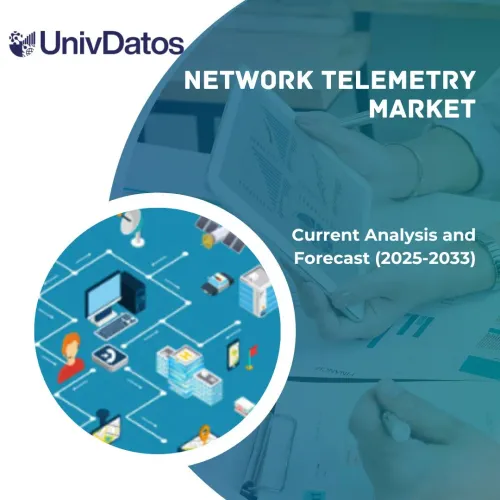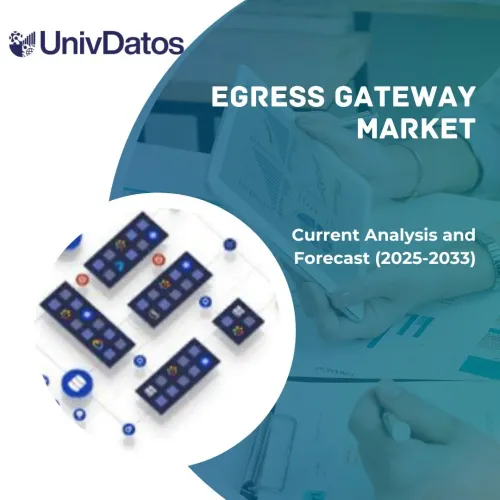- Home
- About Us
- Industry
- Services
- Reading
- Contact Us
MENA Digital Economy Market: Current Analysis and Forecast (2023-2030)
Emphasis on Company Size (SMEs and Large Enterprises); and End-Use (E-commerce, Digital Media, Fintech, Healthtech, and Others); Country

The MENA Digital Economy Market is expected to grow at a strong CAGR of 22.1% during the forecast period. The MENA digital economy market has been experiencing significant growth in recent years, driven by factors such as increasing internet and smartphone penetration, a young and tech-savvy population, government initiatives to promote digital transformation, and a growing entrepreneurial ecosystem. The UAE, Saudi Arabia, and Egypt are the leading markets for the MENA digital economy, with these countries attracting significant investments and witnessing rapid growth in digital business activities. Other countries in the region, such as Jordan, Lebanon, and Morocco, also have emerging digital economies and are seeing a rise in technology startups and digital entrepreneurship. Challenges in the MENA digital economy market include issues of digital inclusion and accessibility, regulatory hurdles, payment infrastructure limitations, and cybersecurity concerns. However, efforts are being made by governments and organizations to address these challenges and promote the growth of the digital economy in the region.
E-learning and edtech have seen significant growth and development in the MENA digital economy in recent years. With increased internet penetration and the proliferation of smartphones, more individuals in the region now have access to affordable and convenient digital learning platforms. For instance, platforms like Coursera, Udemy, and EdX have gained popularity, offering a wide range of online courses and certifications. Additionally, educational institutions and governments in the MENA region are actively adopting edtech solutions to enhance the learning experience. For example, the Saudi Arabian government launched the “Madrasati” initiative, providing digital resources and tools to teachers and students. Similarly, the United Arab Emirates introduced the “Madares” program, focusing on e-learning and the integration of technology in classrooms. These recent developments highlight the increasing importance of e-learning and edtech in fostering education and driving economic growth in the MENA digital economy.
Some of the major players operating in the market include Amazon, Careem, Carrefour, Fetchr, Namshi, Noon, Swvl, Souqalmal, Talabat, and Uber.
Insights Presented in the Report
“Amongst company size, the SMEs segment to hold a dominant share of the market in 2022”
SMEs in the MENA digital economy market have shown remarkable growth and innovation in recent years. They are typically more flexible and agile compared to large enterprises, which allows them to quickly respond to market trends and customer demands. This agility has given them a competitive edge, especially in the dynamic digital landscape. Another key factor contributing to the market leadership of SMEs is their cost-effectiveness. These smaller companies often have lower operating costs and can offer competitive pricing to attract customers. Additionally, SMEs are often more open to adopting new technologies and digital tools, as they have fewer bureaucratic processes and decision-making hierarchies to navigate.
“Amongst end-use, the e-commerce category to hold a dominant share of the market in 2022”
E-commerce segment led the market in 2022, majorly due to the COVID-19 pandemic and the subsequent increase in online shopping. With lockdowns and restrictions on physical retail, consumers turned to e-commerce platforms to fulfill their shopping needs. The convenience of online shopping, along with a wide variety of products, competitive pricing, and doorstep delivery, contributed to the dominance of the e-commerce segment in 2022. Moreover, the e-commerce industry witnessed significant advancements in logistics and payment technologies, enhancing the overall customer experience.
MENA Digital Economy Market Report Coverage

“Saudi Arabia to grow with high CAGR during the forecast period.”
Saudi Arabia led the market in 2022. Saudi Arabia’s digital economy market is rapidly growing and diversifying. Several key sectors contribute to the country’s digital economy, including e-commerce, fintech, digital media, and software development. For instance:
o HungerStation, an online food delivery platform, has gained significant traction in Saudi Arabia. It offers a convenient way for users to order food from a wide range of restaurants, contributing to the growth of the software development sector in the country.
o STC Pay, a digital wallet developed by Saudi Telecom Company, has gained popularity in the country. It offers convenient and secure digital payment solutions, facilitating financial transactions for individuals and businesses.
Reasons to buy this report:
- The study includes market sizing and forecasting analysis validated by authenticated key industry experts.
- The report presents a quick review of overall industry performance at one glance.
- The report covers an in-depth analysis of prominent industry peers with a primary focus on key business financials, product portfolios, expansion strategies, and recent developments.
- Detailed examination of drivers, restraints, key trends, and opportunities prevailing in the industry.
- The study comprehensively covers the market across different segments.
- Deep dive regional level analysis of the industry.
Customization Options:
The MENA Digital Economy market can further be customized as per the requirement or any other market segment. Besides this, UMI understands that you may have your own business needs, hence feel free to connect with us to get a report that completely suits your requirements.
Table of Content
Research Methodology for the MENA Digital Economy Market Analysis (2023-2030)
Analyzing the historical market, estimating the current market, and forecasting the future market of the MENA Digital Economy market were the three major steps undertaken to create and analyze the adoption of MENA Digital Economy in major countries. Exhaustive secondary research was conducted to collect the historical market numbers and estimate the current market size. Secondly, to validate these insights, numerous findings and assumptions were taken into consideration. Moreover, exhaustive primary interviews were also conducted, with industry experts across the value chain of the MENA Digital Economy market. Post assumption and validation of market numbers through primary interviews, we employed a top-down/bottom-up approach to forecasting the complete market size. Thereafter, market breakdown and data triangulation methods were adopted to estimate and analyze the market size of segments and sub-segments of the industry pertains to. Detailed methodology is explained below:
Analysis of Historical Market Size
Step 1: In-Depth Study of Secondary Sources:
Detail secondary study was conducted to obtain the historical market size of the MENA Digital Economy market through company internal sources such as annual reports & financial statements, performance presentations, press releases, etc., and external sources including journals, news & articles, government publications, competitor publications, sector reports, third-party database, and other credible publications.
Step 2: Market Segmentation:
After obtaining the historical market size of the MENA Digital Economy market, we conducted a detailed secondary analysis to gather historical market insights and share for different segments & sub-segments for major regions. Major segments are included in the report as company size and end-use. Further country-level analyses were conducted to evaluate the overall adoption of testing models in that region.
Step 3: Factor Analysis:
After acquiring the historical market size of different segments and sub-segments, we conducted a detailed factor analysis to estimate the current market size of the MENA Digital Economy market. Further, we conducted factor analysis using dependent and independent variables such as company size and end-use of the MENA Digital Economy market. A thorough analysis was conducted for demand and supply-side scenarios considering top partnerships, mergers and acquisitions, business expansion, and product launches in the MENA Digital Economy market sector across the globe.
Current Market Size Estimate & Forecast
Current Market Sizing: Based on actionable insights from the above 3 steps, we arrived at the current market size, key players in the MENA Digital Economy market, and market shares of the segments. All the required percentage shares split, and market breakdowns were determined using the above-mentioned secondary approach and were verified through primary interviews.
Estimation & Forecasting: For market estimation and forecast, weights were assigned to different factors including drivers & trends, restraints, and opportunities available for the stakeholders. After analyzing these factors, relevant forecasting techniques i.e., the top-down/bottom-up approach were applied to arrive at the market forecast for 2030 for different segments and sub-segments across the major markets. The research methodology adopted to estimate the market size encompasses:
- The industry’s market size, in terms of revenue (USD) and the adoption rate of the MENA Digital Economy market across the major markets domestically
- All percentage shares, splits, and breakdowns of market segments and sub-segments
- Key players in the MENA Digital Economy market in terms of products offered. Also, the growth strategies adopted by these players to compete in the fast-growing market
Market Size and Share Validation
Primary Research: In-depth interviews were conducted with the Key Opinion Leaders (KOLs) including Top Level Executives (CXO/VPs, Sales Head, Marketing Head, Operational Head, Regional Head, Country Head, etc.) across major regions. Primary research findings were then summarized, and statistical analysis was performed to prove the stated hypothesis. Inputs from primary research were consolidated with secondary findings, hence turning information into actionable insights.
Key Stakeholders of Digital Economy Market in the MENA Region

Market Engineering
The data triangulation technique was employed to complete the overall market estimation and to arrive at precise statistical numbers for each segment and sub-segment of the MENA Digital Economy market. The data was split into several segments & sub-segments post studying various parameters and trends in the areas of the company size and end-use of the MENA Digital Economy market.
The main objective of the MENA Digital Economy Market Study
The current & future market trends of the MENA Digital Economy market were pinpointed in the study. Investors can gain strategic insights to base their discretion for investments on the qualitative and quantitative analysis performed in the study. Current and future market trends determined the overall attractiveness of the market at a regional and country level, providing a platform for the industrial participant to exploit the untapped market to benefit from a first-mover advantage. Other quantitative goals of the studies include:
- Analyze the current and forecast market size of the MENA Digital Economy market in terms of value (USD). Also, analyze the current and forecast market size of different segments and sub-segments
- Segments in the study include areas of the company size and end-use
- Define and analysis of the regulatory framework for the MENA Digital Economy industry
- Analyze the value chain involved with the presence of various intermediaries, along with analyzing customer and competitor behaviors of the industry
- Analyze the current and forecast market size of the MENA Digital Economy market for the major region
- Major countries of regions studied in the report include Saudi Arabia, UAE, Egypt, Iran, and the Rest of MENA
- Company profiles of the MENA Digital Economy market and the growth strategies adopted by the market players to sustain in the fast-growing market
- Deep dive regional level analysis of the industry
Related Reports
Customers who bought this item also bought










